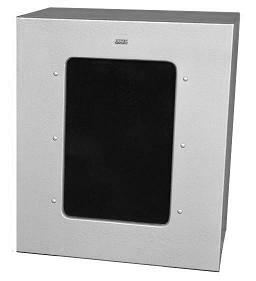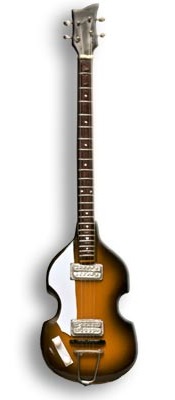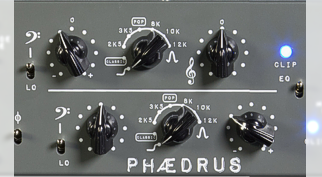

Maybe this was due to the huge Altec cabinets, which exagerated upper-bass "boom", causing the engineers to be cautious with the bass-boost controls? Or maybe this was due to the mastering engineers being cautious about too great a groove modulation? Whatever the reason, the result is less than satisfying and, more than likely, a poor representation of the group's sound and balance as a tight, live, gigging band.

Of course, anyone can apply EQ to the fabs' recordings, but the PHILTER has the benefit of applying equalisation which matches the era of the original recording. The result? Clearly we are walking on hallowed ground here. These are amongst the most famous recordings in the history of recorded music. Nevertheless, we know that McCartney in particular always recognised that The Beatles recordings were exceptionally bass-light. In Mark Lewisohn's scholarly The Beatles Recording Session Paul is quoted as saying,
That's right. On the original recordings you didn't really hear the bass much...... EMI had very firm rules about that........[We'd say] "What do you mean we can't have bass?" They'd say, "Well our rule book says....."
So, by adjusting the mix with EQ controls of the same form and function as those possessed in the original mixer, we get about as close as we can to what adding the extra few dBs of bass lift that Paul was pleading for back in 1963!

The results are surprising. McCartney's bass-parts (whilst a long way from the innovation he displayed in the later recordings) were, nevertheless often far from obvious. Yet, they are so back in the mix in these recordings that they are simply eclipsed by the guitar parts. When the bass is boosted, sometimes a new, unfamiliar, bass root-note emerges from the mid-range; giving the impression that familiar tunes are re-harmonised. This aspect is so extraordinary that we spent many late-nights re-equalising the early recordings for our own benefit and we now find that these are the recordings we listen to, in preference to the original masters! They actually sound radically different. Sadly, and for obvious reasons, we can't put those re-equalised mixes here for you to listen to! So here are a few very short demos.
The example demonstrates a re-balance of the mono mix of the fabs' cover of Smokey Robinson's You Really Got a Hold on Me recorded in the evening of July 18th 1963 from a total of seven complete takes (Takes 1 - 7) and four edit-pieces (Takes 8 - 11).
Two points to make here. The original recording, played first, is as usual bass light. The second section is equalised using the PHUSION EQ to restore some of the bass balance. A little "top" is added too; using +2dB of the 10k peaking response.
In addition, the edit (apparently from an edit-piece, take 10 or 11) which inserts the four bars immediately following the vocal entry, is differently balanced; very bass and treble light. Therefore this was processed on a second pass through the PHUSION EQ, to restore this edit to sound a little like the main take (Take 7) and make the "join" a little less obvious.
Of course, more could be done - like removing the edit "bump" on the edit point return to Take 7, but this is a demo of the PHUSION, not of Pro-Tools!

Address all mail to sales@phaedrus-audio.com
